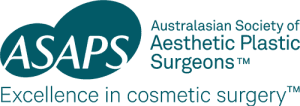Having a Specialist Anaesthetist Present during Surgery is Vital
- Posted on
Australasian Society of Aesthetic Plastic Surgeons (ASAPS) President and Specialist Plastic Surgeon, Dr Mark Magnusson fully supports the call by the Royal Australasian College of Surgeons, the Australian and New Zealand College of Anaesthetists and the Australian Society of Plastic Surgeons for greater regulation of facilities where cosmetic procedures are taking place.
The joint position paper defines day-stay procedures and outlines the minimum standards for national, state and territory regulations for day surgery facilities.
“An area of particular concern for me regarding patient safety is the use of twilight sedation for invasive procedures such as breast augmentations.
“The lure of cut-price procedures can be tempting for people whose main decision driver is cost. But you have to remember that the discounted rate comes from shaving off key components. These elements are generally present in your surgical procedure for safety such as being fully anesthetised and supervised by a Specialist Anaesthetist.
“A Specialist Anaesthetist is a fully qualified medical doctor who, after obtaining their medical degree, has spent at least two years working in the hospital system before completing a further five years of training in anaesthesia. Their training is as long as that of a surgeon.
“Anaesthetists assess patients before their procedures and play an important role in caring for the patient before, during and after surgery. They also provide anaesthetic care for patients undergoing non-surgical procedures, particularly if the procedures are long, complex or painful. Anaesthetists play a pivotal role in resuscitating acutely unwell patients, including trauma victims, and help to manage patients suffering from acute or chronic pain,” Dr Magnusson said.
According to the ANZCA website, clinical anaesthesia is built on the understanding of physiology (how the body works) and pharmacology (how medications work in the body). Anaesthetists have extensive knowledge of medicine and surgery and understanding of the basic sciences. They know how the body responds to anaesthesia during an operation, and how a patient’s health affects these responses.
“There are well-publicised cases where excessive doses of local anaesthetics have led to heart problems and emergency transfer to hospitals. Other ways to cut the price of surgery is by trimming back on the staff in the room, not using the most up to date or appropriate equipment and performing procedures in facilities that aren’t licenced.
“Without the proper multi-disciplinary team in place, you can get a heavily discounted procedure but at what cost? When something goes wrong, and it can, don’t you want to ensure you are in the safest hands surrounded by a team who are appropriately qualified to deal with every aspect of a medical emergency?
“In my eyes, and the eyes of our ASAPS members, this is about protecting the lives of patients and ensuring their safety is paramount. To protect patients we need enforced regulation, appropriate guidelines and benchmarks about who can perform what, and we need to provide a clear delineation between the practitioners operating in this space so people can make an informed decision about who they feel comfortable with to perform their cosmetic procedure” Dr Magnusson said.
Ends
Media contact: Julia Power, National PR and Marketing Manager, 0414 276 990
